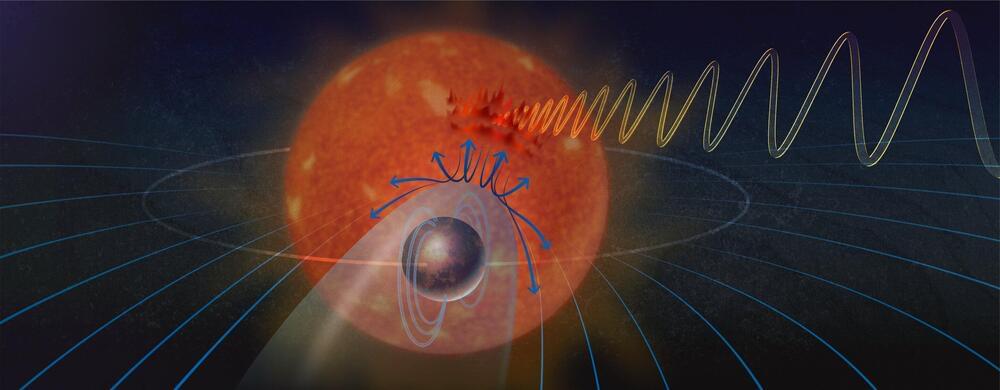Earth’s magnetic field does more than keep everyone’s compass needles pointed in the same direction. It also helps preserve Earth’s sliver of life-sustaining atmosphere by deflecting high energy particles and plasma regularly blasted out of the sun. Researchers have now identified a prospective Earth-sized planet in another solar system as a prime candidate for also having a magnetic field—YZ Ceti b, a rocky planet orbiting a star about 12 light-years away from Earth.
Researchers Sebastian Pineda and Jackie Villadsen observed a repeating radio signal emanating from the star YZ Ceti using the Karl G. Jansky Very Large Array, a radio telescope operated by the U.S. National Science Foundation’s National Radio Astronomy Observatory. Research by Pineda and Villadsen to understand the magnetic field interactions between distant stars and their orbiting planets is supported by NSF. Their research was published today (April 3) in the journal Nature Astronomy.
“The search for potentially habitable or life-bearing worlds in other solar systems depends in part on being able to determine if rocky, Earth-like exoplanets actually have magnetic fields,” says NSF’s Joe Pesce, program director for the National Radio Astronomy Observatory. “This research shows not only that this particular rocky exoplanet likely has a magnetic field but provides a promising method to find more.”
